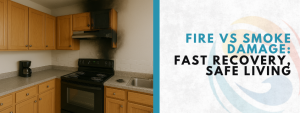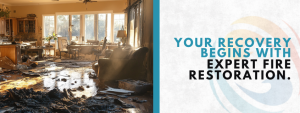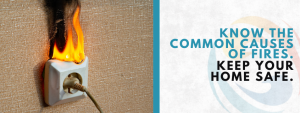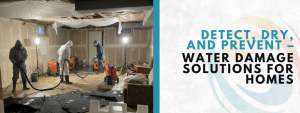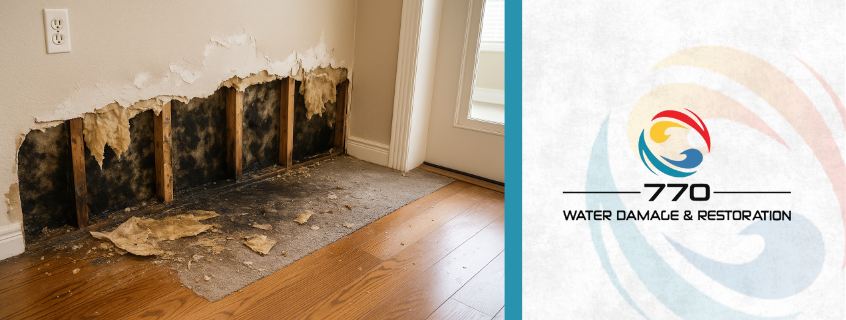
Imagine you’re coming home from a relaxing weekend trip. You walk through the front door, expecting peace and comfort, only to find water soaking your floors, smoke stains on your walls, or worse. Disasters like this don’t just destroy your property; they take away your peace of mind. But here’s the good news: most home disasters can be avoided. This guide will walk you through preventing home disasters before they happen, using simple steps anyone can follow.
When it comes to keeping your home safe, a little effort now can save you a lot of pain later. Whether it’s a leaky pipe, faulty wiring, or forgotten candles, most hazards offer warning signs. The secret is learning how to spot them—and how to fix them before things get out of hand.
Let’s explore the key steps that can help you stay ahead.
Understand the Most Common Causes of Home Disasters
Before preventing home disasters, you need to know what to look out for. Here are the top culprits:
- Water leaks and floods from broken pipes, clogged drains, or storms.
- Fires started by kitchen accidents, space heaters, or faulty wiring.
- Mold growth due to humidity or standing water.
- Electrical failures from outdated systems or overloaded outlets.
- Gas leaks from stoves, heaters, or broken connections.
Each of these problems starts small. But if you ignore them, they can lead to thousands of dollars in damage—or worse, harm to your loved ones. Preventing home disasters means acting before trouble strikes.
Start with Water: The Silent Home Destroyer
Water damage often sneaks in quietly. A slow leak behind a wall or under the sink can lead to mold, warped wood, or crumbling drywall. You might not see the damage until it’s too late.
Here are smart ways to stay ahead:
- Check under sinks and behind toilets for moisture every month.
- Look for stains on ceilings or walls, which can mean a hidden leak.
- Clean gutters to prevent water overflow that can damage your roof or foundation.
- Test your sump pump, especially during rainy seasons.
- Install a water sensor under your sinks, near your water heater, and in the laundry room.
For those who want detailed help stopping leaks before they destroy your home, here’s a great resource: find expert tips to reduce costly water damage.
Preventing home disasters like flooding or mold starts with keeping water where it belongs.
Stay Fire-Safe with Simple Habits
House fires are terrifying—and they often begin with everyday items. A space heater left too close to the couch. A candle near curtains. Even dust in your dryer can ignite a fire.
Let’s stop fires before they start:
- Install smoke detectors in every bedroom, hallway, and kitchen.
- Test smoke detectors monthly and replace batteries twice a year.
- Keep fire extinguishers in the kitchen and garage—and learn how to use them.
- Never leave cooking food unattended, even for a quick phone call.
- Avoid overloading outlets or using old extension cords.
- Clean the lint trap in your dryer after every use.
- Store flammable items like gasoline in approved containers away from heat.
Preventing home disasters related to fire means keeping watch on the little things. A few extra seconds of caution can save your home.
Tame the Hidden Dangers in Your Walls: Electrical Safety
Many homes have old wiring that just can’t handle modern demands. If your lights flicker or if you’ve tripped your breaker more than once, your electrical system may need help.
Pay attention to signs like:
- Warm outlets or light switches
- Buzzing sounds behind walls
- Tripping breakers when using small appliances
- Sparks or burning smells from outlets
To stay safe:
- Hire a licensed electrician to inspect your system every 5–10 years.
- Use surge protectors for electronics.
- Don’t plug space heaters into power strips—plug them directly into the wall.
- Avoid running cords under rugs, which can cause them to overheat.
Preventing home disasters related to electricity means noticing small signs before they become emergencies.
Watch the Air You Breathe: Mold and Mildew
Mold isn’t just ugly—it can harm your health, especially for kids or people with allergies. It grows in damp, dark places, and it often shows up after a leak or flood.
Check for these warning signs:
- Musty smells in bathrooms or basements
- Black, green, or gray spots on walls or ceilings
- Peeling paint or bubbling wallpaper
- Cold symptoms that never go away
What you can do:
- Use exhaust fans in bathrooms and kitchens.
- Fix leaks quickly, even small ones.
- Run a dehumidifier in humid areas like basements.
- Open windows for better airflow when possible.
To better protect your home and loved ones, you can explore services that help keep indoor air clean.
Preventing home disasters means keeping both your space and your air clean and dry.
Be Gas-Smart: Avoid Explosions and Poisoning
Gas leaks don’t just smell bad—they can be deadly. Natural gas is used in many homes for cooking or heating, and a tiny leak can cause an explosion or release harmful carbon monoxide.
To stay safe:
- Have gas lines inspected by a professional once a year.
- Install carbon monoxide detectors near bedrooms and gas appliances.
- Never ignore the smell of rotten eggs, which may mean a leak.
- Teach everyone in your home how to shut off the gas valve.
Preventing home disasters caused by gas starts with awareness and action.
Strengthen Your Home from the Outside In
Your roof, windows, doors, and foundation all work together to keep the weather out and comfort in. When one of them breaks down, trouble sneaks in fast.
Tips for toughening your home:
- Inspect your roof annually for missing or cracked shingles.
- Seal gaps around windows and doors to keep out water and pests.
- Trim tree branches away from the house to avoid storm damage.
- Check for cracks in the foundation, especially after heavy rain.
Here’s a quick checklist:
| Area | What to Check | When to Check |
| Roof | Missing shingles, leaks | Once a year |
| Windows/Doors | Drafts, cracked glass, loose frames | Twice a year |
| Gutters | Clogs, overflow, sagging | Each season |
| Foundation | Cracks, soft spots | Every 6 months |
| Yard/Exterior | Tree limbs, drainage, pests | Each season |
Preventing home disasters means watching your home like a guard dog would—loyal, alert, and ready.
Keep an Emergency Kit Ready
Even with great planning, things can still go wrong. That’s why you need a “just in case” emergency kit. It helps your family stay calm and safe until help arrives.
What to include:
- Flashlights with extra batteries
- Bottled water (1 gallon per person, per day)
- Non-perishable food for 3 days
- First aid supplies
- Portable phone charger
- Important papers in a waterproof bag
- Cash in small bills
Store your kit in a spot where everyone can find it quickly. Talk about it during family meetings. Practice fire drills. Remind everyone what to do if something goes wrong.
Preventing home disasters means planning for the ones you can’t prevent.
Smart Technology Can Help Protect Your Home
We live in the age of smart homes, and it’s a game-changer for safety. Many devices now alert you when something’s wrong—even if you’re not home.
Helpful gadgets include:
- Smart water sensors that alert you to leaks
- Security cameras for checking in remotely
- Smoke and CO2 alarms that send phone alerts
- Smart thermostats that adjust to avoid overheating
- Smart plugs that shut off appliances on a schedule
These tools don’t just offer comfort—they’re powerful tools for preventing home disasters and keeping your property secure.
Everyday Habits That Make a Big Difference
Sometimes the best protection is your daily routine. Simple habits can keep problems away. Here are a few to start:
- Always turn off appliances when you leave a room.
- Walk through your home once a month, looking for signs of damage.
- Clean behind appliances like fridges and ovens.
- Replace air filters every 2–3 months to avoid HVAC issues.
- Keep a written list of emergency contacts, including plumbers, electricians, and insurance providers.
With just a little attention each day, you can build a shield around your home.
Be Ready, Not Sorry
Preventing home disasters isn’t about being paranoid. It’s about being prepared. Most damage happens because someone didn’t see the signs or thought, “I’ll take care of that later.” Don’t be that person.
The best time to stop a disaster is before it starts. If you want to learn how professionals help homeowners stay safe before things get messy, see this trusted resource for better peace of mind.
Preventing home disasters means choosing action over regret, planning over panic, and protection over repair.
Final Thoughts
Your home is your safe place. Your comfort zone. Your shelter. Don’t let small things become big problems. By staying alert, fixing small issues early, and building smart habits, you’re giving your home—and your family—the care they deserve.
If you ever feel overwhelmed or unsure where to begin, you’re not alone. Start with this clear guide from seasoned restoration pros who understand what it takes to keep homes safe from disaster.
By taking a few simple steps today, you’re making sure your tomorrow is safer, cleaner, and more secure.
Frequently Asked Questions: How Can I Prevent Disasters in My Home?
How can I tell if my home has a hidden water leak?
Look for signs like stained ceilings, musty smells, or sudden spikes in your water bill. You can also install water sensors to get instant leak alerts.
What’s the easiest way to reduce fire risks in my home?
Test smoke detectors monthly, keep flammable items away from heat sources, and never leave cooking unattended. Unplug appliances when not in use to prevent electrical fires.
How do I know if mold is growing in my house?
If you smell musty odors or see black or green spots on walls or ceilings, mold could be present. Use a dehumidifier and fix leaks quickly to stop mold before it spreads.
Should I get my electrical system checked even if nothing seems wrong?
Yes—outdated wiring and hidden faults can cause serious fires. A licensed electrician can find and fix small issues before they become big problems.
What should I include in an emergency home disaster kit?
Pack flashlights, water, non-perishable food, a first aid kit, and a phone charger. Keep it in an easy-to-reach spot and update it every 6 months.


